|
In 1661, The young Shun Chih Emperor caught smallpox and passed
away. His third son, Hsuan Yeh The coinage of the K'ang Hsi series is very interesting. Have
you heard about the K'ang Hsi Ch'ien Shih |
| Home Page | New Data | Chronology | Cast Coins | Struck Coins | Paper Money | Links/Reference |
|
In 1661, The young Shun Chih Emperor caught smallpox and passed
away. His third son, Hsuan Yeh The coinage of the K'ang Hsi series is very interesting. Have
you heard about the K'ang Hsi Ch'ien Shih |
|
T'ung |
Fu |
Lin |
Tung |
Chiang, |
|
Hsuan |
Yuan |
Su |
Chi |
Ch'ang, |
|
Nan |
Ho |
Ning |
Kuang |
Che, |
|
T'ai |
Kuei |
Shen |
Yun |
Chang. |
| Obverse | Reverse | Description |
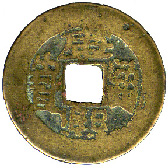
|
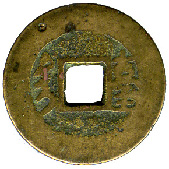
|
No. 0061 |
| Mint: T'ainan | ||
| Diam. 23 mm | ||
| Wt. 2.8 g. | ||
| Rareness C | ||
| Mint Evolution and Peculiarity | ||
|
In 1683, T'aiwan returned to China as a part of Fukien Province,
when she was captured by the Qing government. But until 1689,
a mint was established in T'ainan and cast coin bearing with
"T'ai" mint marks in both Chinese |
||
| Obverse | Reverse | Description |
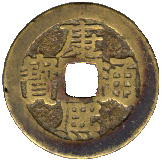
|
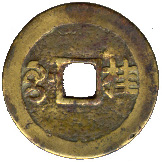
|
No. 0062 |
| Mint: Kweilin | ||
| Diam. 26 mm | ||
| Wt. 3.9 g. | ||
| Rareness D | ||
| Mint Evolution and Peculiarity | ||
|
This coin was cast by the Kweilin mint of Kwangsi province with
the "Kwei" mint marks written in both Manchu and Han
script |
||
| Obverse | Reverse | Description |
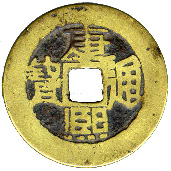
|
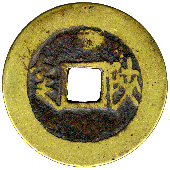
|
No. 0063 |
| Mint: Sian | ||
| Diam. 27.5 mm | ||
| Wt. 5.1 g. | ||
| Rareness E | ||
| Mint Evolution and Peculiarity | ||
|
This K'ang Hsi T'ung Pao was cast by Sian mint of Shensi province.
On the reverse are the "Shan" mint marks in both Manchu
and Han scripts |
||
| Obverse | Reverse | Description |
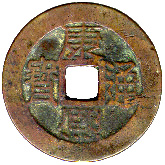
|
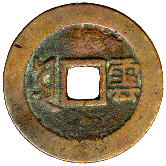
|
No. 0064 |
| Mint: Kunming | ||
| Diam. 27 mm | ||
| Wt. 5.4 g. | ||
| Rareness D | ||
| Mint Evolution and Peculiarity | ||
|
Have you noticed the different appearance in colour of the Yunnan Kanghsi cash? It is a little reddish appearance compared with other cash. The composition of the standard cash was 60% of copper and 40% of zinc during Qing dynasty. But cash cast in Yunnan Province was exception which was allowed to use 20% zinc and 80% copper to cast coin, because zinc was more expensive than copper in Yunnan Province. There were at least seven mints in existence in Yunnan Province during different period of Qing dynasty, in cluding Kun-ming, Ta-li, Meng-tse, Lin-an, Chan-i, Lu-feng and Tung Ch'uen Mint. Yunnan mints produced about 288 million pieces of copper cash each year during K'anghsi period. In 1686, |
||
| Obverse | Reverse | Description |
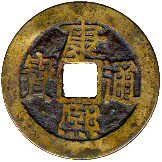
|
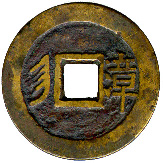
|
No. 0065 |
| Mint: Changchow | ||
| Diam. 26 mm | ||
| Wt. 4.5 g. | ||
| Rareness D | ||
| Mint Evolution and Peculiarity | ||
|
The Changchow Mint of Fukien province was first established in
19th year of the K'ang Hsi reign (1680AD). It began to cash K'ang
Hsi T'ung Pao bearing with "Chang" mint marks in both
Han script |
||
Bibliography
| Home Page | New Data | Chronology | Cast Coins | Struck Coins | Paper Money | Links/Reference |